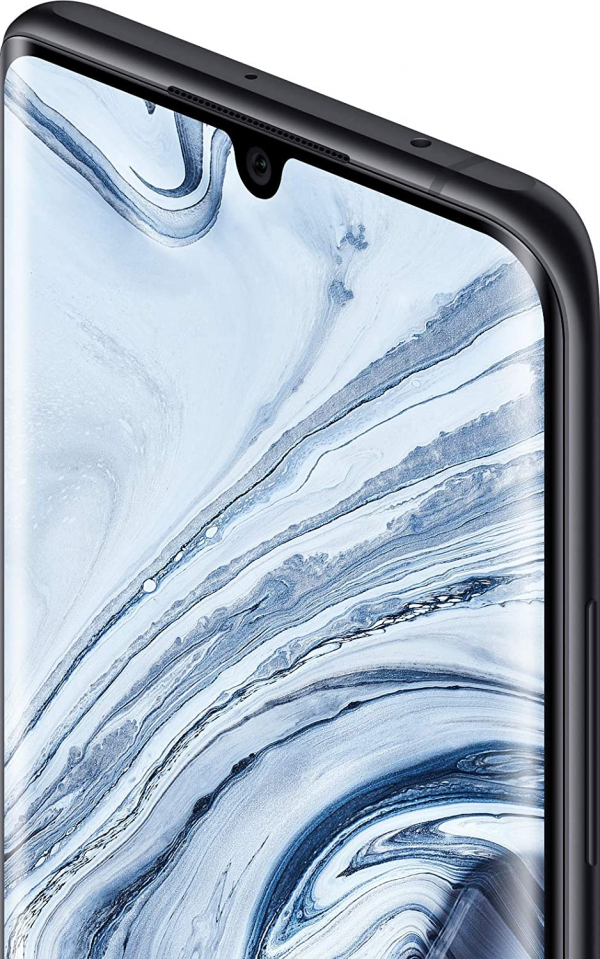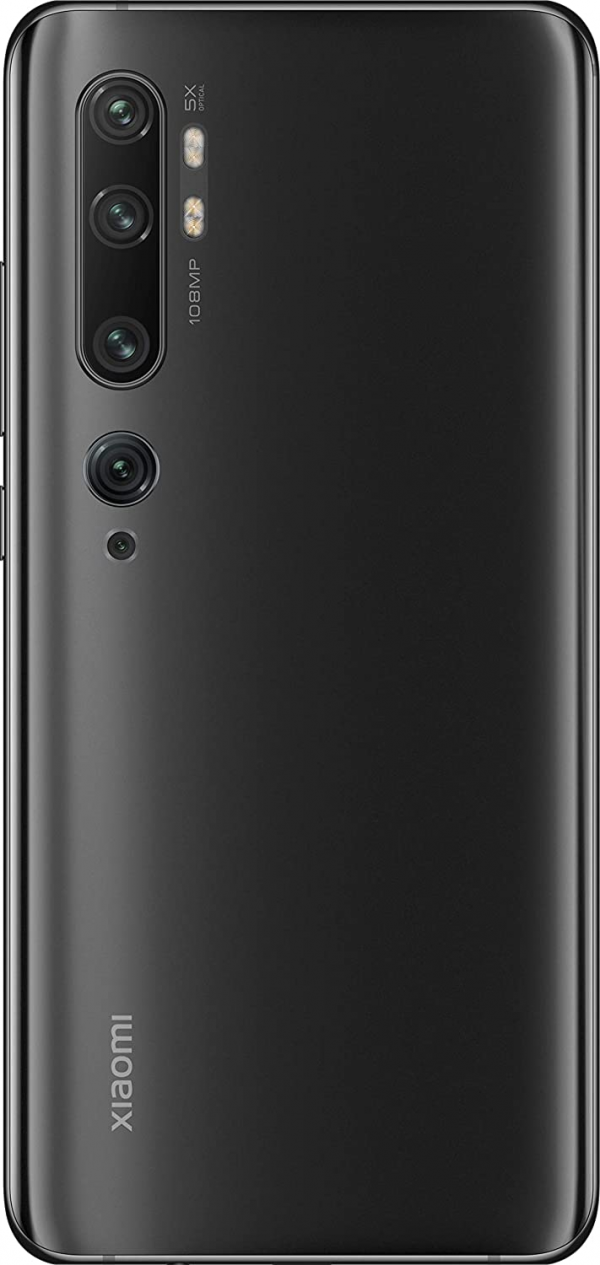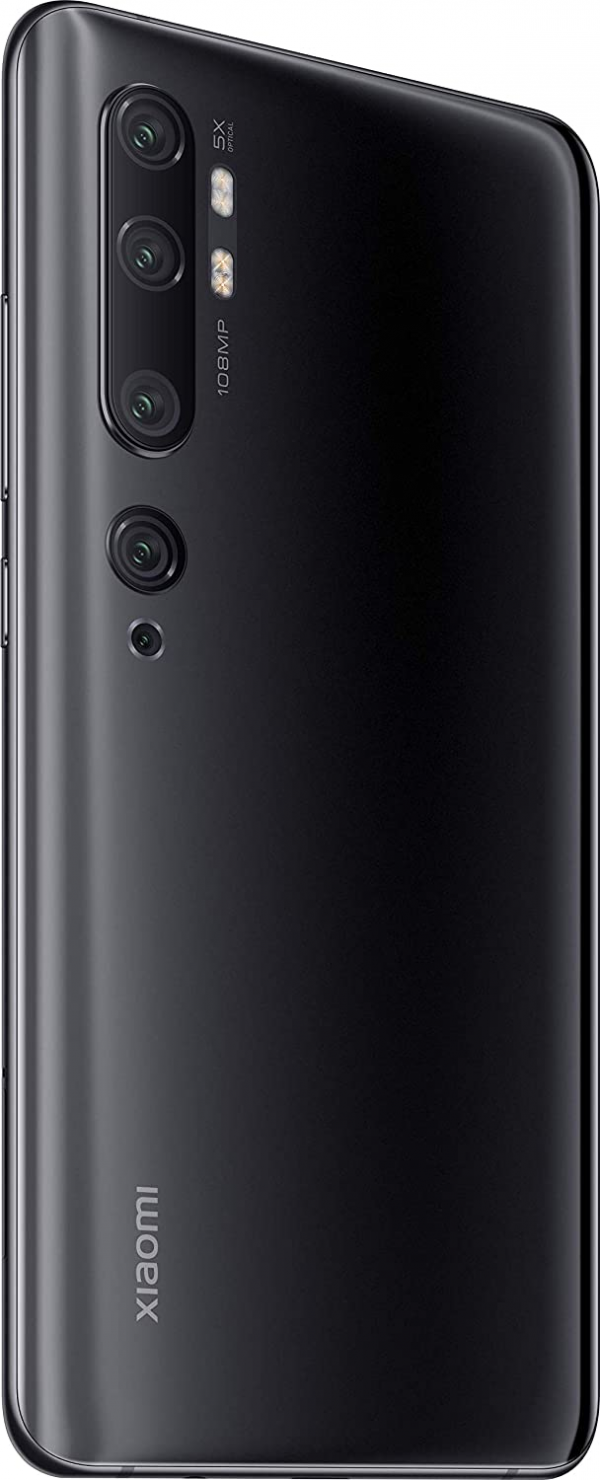Xiaomi
Xiaomi Mi 10: a mobile up to its ambitions
Aprox. 437€ - see price -
See specificationsXiaomi has made a radical change of course with its Mi 10. Gone are the days of very aggressive pricing, the Chinese brand is positioning its mobile at the same price level as the competition. Is this surge justified?
Our review
Presentation
The Xiaomi Mi 10 wants to be the affordable flagship of the Chinese manufacturer. Hitherto used to high-end killers, the firm this time turned around and placed itself on the ground of those it aimed to compete with in its early days. With a starting price of € 799, the Xiaomi Mi 10 comes to rub first with the Huawei P40 announced shortly after him. But he also has other opponents like the OnePlus 7T Pro, the Google Pixel 4, even the Samsung Galaxy S20 - which is still more expensive than our star of the day.

Ergonomics and design
If Xiaomi wants to rub shoulders with the flagships of Samsung and Huawei with its Mi 10, it must first take advantage of an exemplary finish and premium ergonomics. And we must admit that the Chinese manufacturer offers us a quality mobile here. At the front, the 6.67-inch Oled slab occupies 90% of the facade. Well helped by a punched photo module, the borderless feeling is therefore very present, despite a slightly too thick chin. But nothing very serious. On the back, the glass back of the Mi 10 extends the desire for premium aesthetics desired by Xiaomi. It turns out to be of the most beautiful effect, despite a tendency to keep fingerprints.
In terms of ergonomics, the Mi 10 is also convincing. The lock and volume buttons are easily accessible. The smartphone, although impressive, is well balanced. It is however important to specify that it is a mobile difficult to handle with one hand.
The Mi 10 can accommodate two nanoSIMs, but no microSD card. It will therefore be necessary to accommodate 128 GB or 256 GB of available memory. Note that 13.7 GB is immediately used by the operating system. Finally, if the Mi 10 does not get this fifth star in ergonomics, it is because of the lack of IP68 certification. The mobile is therefore not waterproof, a big shortcoming for a smartphone launched at € 799.

Screen
Like the Mi 10 Pro, this model offers a 6.67-inch Oled panel with Full HD + definition. It has a screen refresh rate of 90 Hz, a first for the Chinese brand.
Usually, the brand offers excellent billboards, and this Mi 10 is no exception to the rule. By choosing the "original color" profile in the settings, you will get the best of what the screen has to offer. Thus, we noted a delta E of 1.3 with a very slight drift of red and green. Nothing very alarming in itself. The color temperature is 6,692 Kelvin, a value very close to the standard (6,500 K).
This new flagship offers a fairly high maximum brightness. We noted a peak at 852 cd / m², enough to offer a very comfortable reading, even in the sun since its reflectance rate is 43%. The display therefore absorbs reflections very well. At night, the experience will also be very comfortable with a minimum brightness raised to 2 cd / m².
Finally, this screen benefits from an almost infinite contrast ratio as well as an imperceptible persistence time. Characteristics specific to the use of an Oled slab. The tactile delay is 51 ms.

Performances
The Xiaomi Mi 10 is one of the first smartphones to arrive in Spain with the Snapdragon 865, the latest chip from Qualcomm. This is coupled with 8 GB of RAM, which, in theory, should have given it performance that we have never seen before.
But as we were able to demonstrate in our article dedicated to mobile performance, this is not the case. The Xiaomi Mi 10 remains a powerful high-end smartphone, but not as powerful as the competition. Above all, it fails to supplant the Snapdragon 855+, a processor yet supposed to be less efficient.
Announced on March 27, the Xiaomi Mi 10 and Mi 10 Pro have arrived in our hands. Curiosity obliges, we subjected them to our protocol of ...
The fault of an optimization a little too sparse to be able to dethrone the Google Pixel 4, which still occupies the first place in our ranking, even the Huawei P40, one of its main competitors.
Our performance tests are carried out with viSer, the application developed by the company SmartViser.

Photo
In good flagship of 2020, the Xiaomi Mi 10 arrives strongly equipped on its photo part. No less than 4 sensors are present on the smartphone, all the details of which are in the table below:
The main module may be 108 megapixels, the photos taken basic will be 25 megapixels. The pixel binning technique - which combines four pixels into one - is used here. To see what the 108-megapixel sensor is worth as a whole, you can take a look at our dedicated article. The results obtained by the main module of the Mi 10 being the same as those of the Mi 10 Pro.
We may be surprised by the definition of 25 megapixels, which does not correspond to a quarter of 108 megapixels. In reality, Xiaomi couples the pixel binning to a crop. The latter is operated to limit problems due to optics and in particular distortion, as confirmed by the manufacturer. This does not prevent the Mi 10 from delivering an excellent level of detail in its shots, in addition to displaying a certain naturalness in the rendering.
In low light, the rendering is very different with a pronounced use of smoothing in solid areas of color. The Mi 10 manages to give the change by cleverly playing with the accent to give the feeling that the details are present.
The 13-megapixel sensor of the ultra wide-angle module is not exceptional. Its shots lack sharpness and the Mi 10 has an annoying tendency to burn the brightest areas. The correction of the distortion is mastered, but not perfect.
In low light, ultra wide-angle photos are simply unusable. The scene is underexposed and literally drowned out by the electronic noise and the attempt to smooth the Mi 10. On this point, the Samsung Galaxy S20 is doing slightly better.
At the front, a 20-megapixel module takes care of taking your picture. It turns out to be quite effective. Once the beauty filters are deactivated, the images obtained are quite realistic. The portrait mode also does its job well with a successful cutting. Finally, the Mi 10 is capable of filming in 8K 30 fps. The result is of good quality, with sufficient fluidity and fairly good light management.

Autonomy
Xiaomi's smartphone houses has 4,780 mAh battery. A large accumulator which allows the Mi 10 to last 20 hours and 40 minutes on our protocol evaluating autonomy. A high-flying score for a high-end mobile.
The phone is quickly rechargeable to 30 W, wired or wireless. The company promised 100% battery life in just 57 minutes. It took 56 minutes to fully charge the smartphone. The promise is thus kept. Note that this Mi 10 has reverse wireless charging at 5 W. This can be useful for troubleshooting your friends.
Our battery tests are automated by viSer, the application developed by the company SmartViser. The results obtained with viSer come from measurements carried out under real conditions of use (calls, SMS, videos, launching of applications, web browsing, etc.).

Conclusion
The recipe for the Xiaomi Mi 10 works very well overall. The Chinese manufacturer offers us a resolutely high-end mobile in its approach, which has few faults. It easily competes with the Samsung Galaxy S20 or other OnePlus 7T Pro. Difficult on the other hand to understand the surge in the sale price compared to a Mi 9 which also excelled for 300 € less at its launch.

Specifications
Reviews


best phone for the money
it is actually the first android I've recommend, battery, power and everything is premium on this phone! so similar in specks to the 11 pro max, and more than half the price !!!
Nice phone value
While not having the fastest processor, unless you are gaming etc..ya really don't notice. Cameras are nice and this phone is a solid offer for mid tier snartphones. The Miui UI takes a little getting used to, but after a week it's fine. Does everything phones costing 3x's as much does, just a hair slower and while the screen is not the best in show it is no slouch. If you watch that many movies on ur phone, this one is not going to stop you from that. Overall really good value.
Flag ship killer with a professional camera
This is such a beautiful and awesome phone for the price. The camera is way better than any iPhone I've ever tried and the battery life easily lasts 2 days.
Everything about this phone is perfect and for the price it's just as good as the 1000 dollar flagship phones that are out now
Better than iPhone or Samsung
Phone takes amazing pictures and functions very well on a daily basis. I'm a die hard iPhone fan but this phone has me looking in the mirror